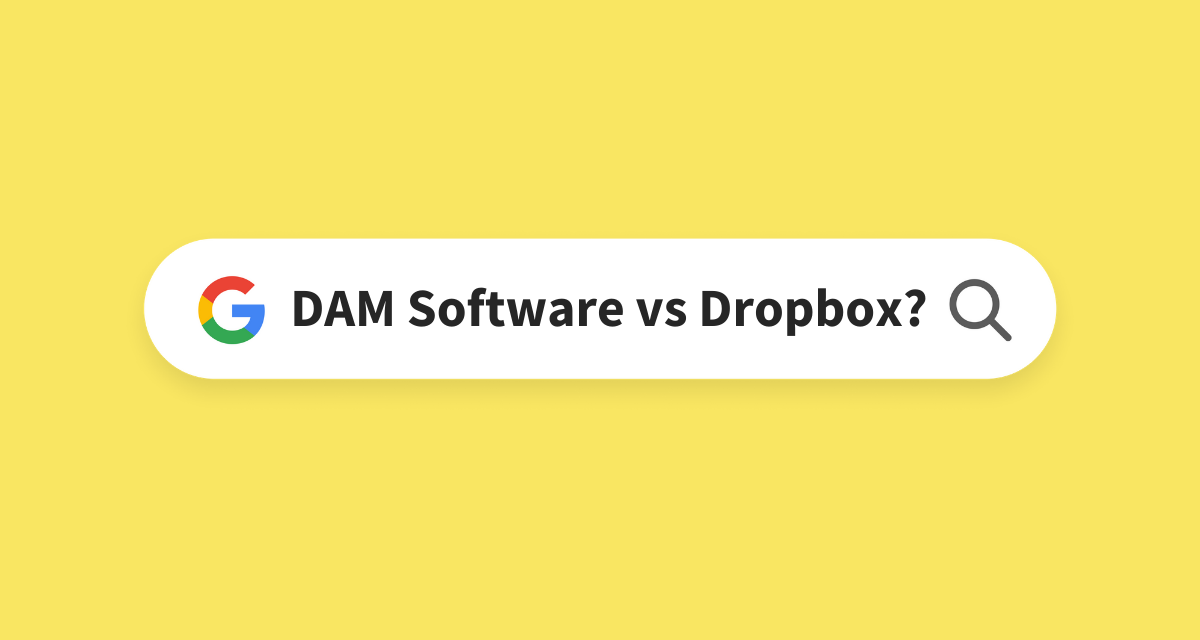Dropbox v. Digital Asset Management - Which Solution is Best for Your Marketing Team


Digital Asset Management (DAM) has become an essential tool for modern marketing teams, offering a centralized and streamlined approach to managing, storing, and sharing all digital assets. Unlike cloud-based storage solutions like Dropbox, DAM provides advanced features that cater to the specific needs of marketing teams. In this blog post, let's take a look at why DAM is the superior choice for marketing teams and how it can help your team improve efficiency, productivity, and brand consistency.
Streamlined Asset Management
Marketing teams often struggle to keep track of the large volume of digital assets they produce and use. Without proper organization, these assets can quickly become disorganized and difficult to find. With DAM, all assets are organized in a centralized location with proper tagging and metadata, making it easy to find the assets you need quickly.
Unlike Dropbox, which offers limited metadata and taxonomy structures, DAM allows for customizable metadata and taxonomy structures to match your team's specific needs. It also provides advanced searching capabilities, so you can quickly find the assets you need.
Brand Consistency
Brand consistency is essential for all marketing teams. Maintaining brand consistency across all channels and assets helps to build trust and recognition with your audience. With DAM, you can ensure that all assets are up-to-date and in line with your brand guidelines. You can create approval workflows to ensure that all assets are reviewed and approved before they are shared or published. DAM also offers version control, so you can keep track of changes and revert to previous versions if necessary.
In comparison, Dropbox lacks the features to ensure brand consistency, and its generic folder structure makes it difficult to organize assets according to brand guidelines. This can result in inconsistent and outdated assets being used, which can harm your brand reputation.
Time and Cost Savings
Managing digital assets can be a time-consuming and costly task for marketing teams. DAM can help your team save time and money by streamlining asset management and ensuring brand consistency. It allows for easy sharing of assets with internal and external stakeholders, reducing the need for manual processes.
In comparison, Dropbox requires more manual effort to manage assets, which can result in inefficiencies and wasted time. It also lacks the features to ensure brand consistency, which can lead to costly mistakes and rework.
Analytics and Insights
Marketing teams need to track asset usage and performance to determine their ROI and identify opportunities for improvement. DAM provides analytics and insights, such as asset usage reports, download tracking, and engagement metrics, to help teams make data-driven decisions.
Dropbox lacks these features, making it difficult to measure asset performance and track ROI accurately.
The Bottom Line
Investing in a Digital Asset Management system can be a game-changer for your marketing team. It provides a streamlined approach to managing and sharing digital assets, ensuring brand consistency and saving time and money. Unlike cloud-based storage solutions like Dropbox, DAM offers advanced features that cater to the specific needs of marketing teams, such as customizable metadata, approval workflows, and analytics and insights.
At Image Relay, we offer a comprehensive Digital Asset Management solution that caters to the specific needs of marketing teams. Our DAM system provides a centralized location for all digital assets, customizable metadata, AI tagging, version control, and advanced searching capabilities. We also provide analytics and insights, such as asset usage reports, download tracking, and engagement metrics, to help your team make data-driven decisions.
If you're looking for a Digital Asset Management solution that can help your team improve efficiency, productivity, and brand consistency, contact Image Relay today.



